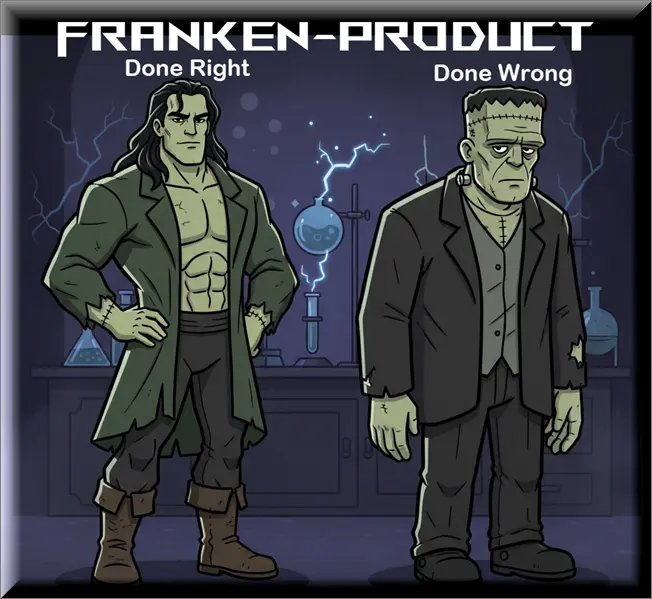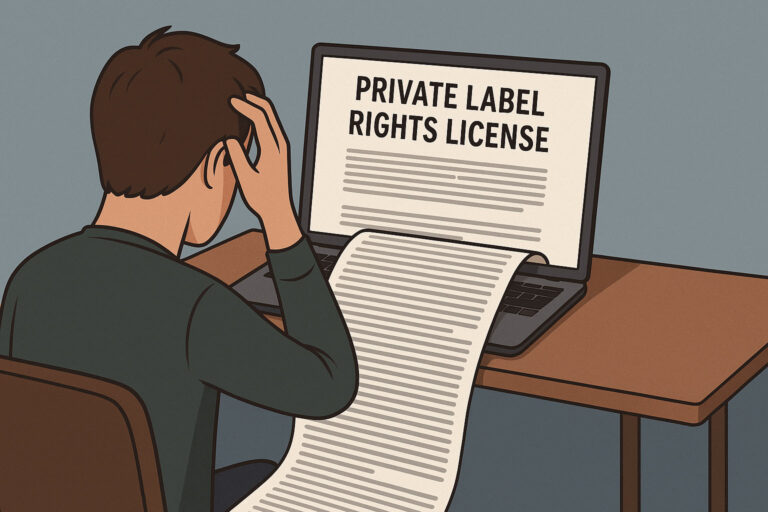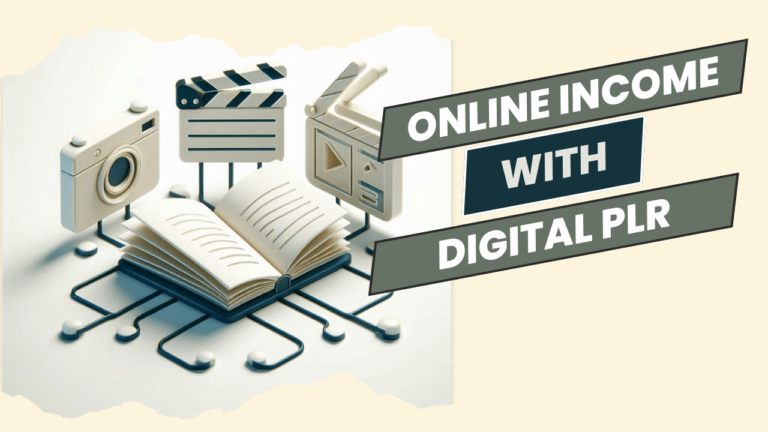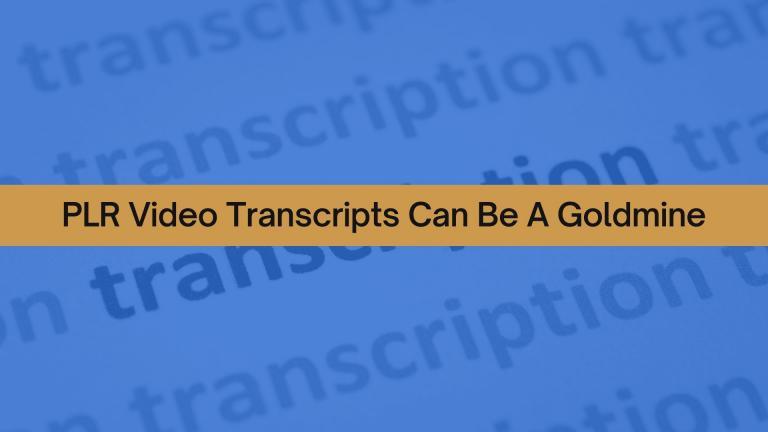To make old PLR content feel fresh again, we’ll need to focus on several key updates that modern audiences expect. First, let’s replace outdated statistics and references with current data from authoritative sources – I’m looking at you AI. We’ll then refresh the writing style to be more conversational and relatable while adding contemporary case studies and examples that resonate with today’s readers.
Modern visual elements, like infographics and responsive design features, help transform stale content into engaging material. By restructuring content flow and incorporating storytelling techniques, we can breathe new life into older PLR material. Looking into these strategies will uncover additional methods to refresh your content.

Key Takeaways
- Update outdated statistics and references with current data from authoritative sources to restore content credibility and relevance.
- Transform formal writing into a conversational tone while incorporating modern storytelling techniques and relatable examples.
- Integrate fresh visual elements like infographics, modern images, and responsive design to enhance engagement across all devices.
- Replace obsolete case studies with contemporary success stories that reflect post-2020 business and social environments.
- Break up dense text with multimedia elements, interactive features, and clean layouts to improve readability and user experience.
Common Signs of Old PLR Content
As we grow older, our bodies naturally show various signs of aging that can affect both our appearance and physical capabilities. The same principle applies to PLR content, where we can spot telltale indicators of PLR fatigue in aging materials.
Let’s look at how outdated PLR content shows its age, much like wrinkles on our skin. We’ll often notice dated references, obsolete statistics, and formatting that screams “2010” – these are the gray hairs of our content world.
Just as we might notice our joints getting creaky, aging PLR often shows stiffness in its approach to content relevance, using terminology that’s no longer in vogue.
Remember those old websites with flashy graphics and comic sans font? That’s exactly what we’re dealing with when we encounter ancient PLR content. The structure might be sound, but the presentation needs a serious facelift.
We can spot outdated marketing tactics, irrelevant social media references, and technical advice that’s about as current as flip phones. It’s totally up to you to decide which elements need updating, but staying aware of these aging signs helps us maintain fresh, engaging content.
Research Current Market Trends
In line with creating vibrant PLR content, researching current market trends helps us understand what today’s audiences actually want and need. Through careful market analysis, we’re able to identify emerging patterns and shifts in audience preferences that make our content more relevant and engaging.
Let’s look at how staying current with market trends transforms tired PLR content into something fresh and valuable. When we dig into what’s trending, we’re not just collecting data – we’re discovering opportunities to connect with readers in meaningful ways. This process helps us adapt existing PLR to match today’s conversations and challenges.
- We’re seeing increased demand for authentic, relatable content that speaks directly to personal experiences.
- There’s growing interest in practical, actionable solutions rather than theoretical concepts.
- Audiences are drawn to content that acknowledges current social and technological changes.
- We’re noticing a shift toward more inclusive, diverse perspectives in all content types.
Update Data and Statistics
The lifeblood of compelling PLR content lies in its accurate, up-to-date statistics and data points. When we’re revitalizing tired PLR content, we’ll want to hunt down the most current numbers that support our key messages.
Let’s start by identifying every outdated statistic and replacing it with updated statistics from authoritative sources like government databases, industry reports, and academic studies.
We can transform our PLR content by diving into relevant data that resonates with today’s readers. For instance, if we’re working with marketing PLR from 2019, those pre-pandemic social media usage statistics won’t cut it anymore. Instead, we’ll want to incorporate new numbers about current platform demographics and engagement rates.
Don’t forget to cite your sources – it’s what separates professional content from amateur hour.
Remember to look for statistics that tell a story rather than just throwing numbers at your readers. When we find that perfect blend of compelling narratives and current data points, we’ll breathe new life into even the most tired PLR content.
It’s like giving your content a new coat of paint while reinforcing its foundation.
Refresh Writing Style
Modern readers need content that speaks their language and matches current writing trends.
We’re seeing a shift away from formal, stuffy writing toward a more creative language style that feels authentic and relatable.
Let’s transform that outdated PLR content by adopting an engaging tone that connects with today’s audience.
- Replace robotic phrases with conversational language that makes readers feel like they’re chatting with a friend.
- Break up dense paragraphs into digestible chunks that won’t overwhelm your audience.
- Add personality through carefully chosen analogies and examples that your readers will instantly understand.
- Incorporate modern references and expressions that make your content feel fresh and relevant.
We’ll want to maintain professionalism while injecting warmth into our writing.
For example, instead of saying “utilize this methodology,” we can say “try this approach.”
Let’s also swap outdated terms like “forthwith” or “herewith” for simpler alternatives that everyone understands.
Remember, we’re not dumbing things down – we’re making our content more accessible and enjoyable to read.
Think of it as giving your PLR content a modern makeover that resonates with today’s readers.
Add Modern Case Studies
Fresh language alone won’t prove your points to skeptical readers – they need real examples that showcase success. When we refresh PLR content, let’s add current case studies that demonstrate real world applications of the strategies we’re discussing.
Look at how we can transform dated marketing advice by including examples like Canva’s rise to design dominance or Notion’s community-driven growth. These industry innovations help readers visualize exactly how concepts work in today’s marketplace.
We’ll want to swap out any pre-2020 examples with contemporary success stories that reflect current business realities.
Let’s dig into specific techniques: First, identify key teaching points in your PLR content. Then, research companies or entrepreneurs who’ve recently achieved success using those methods.
For instance, if your PLR discusses social media marketing, we could reference how Duolingo turned TikTok strategy into 5 million followers in 2023.
Don’t forget to verify your sources – we want legitimate case studies that stand up to scrutiny. By weaving these modern examples throughout your content, you’ll transform theoretical concepts into practical, actionable insights that readers can trust and implement.
Replace Outdated References
Keeping up with the times demands a thorough sweep through outdated references in that dusty old PLR content.
We’ll want to replace those old examples with timely examples that resonate with today’s readers. When we spot references to MySpace or flip phones, it’s time to swap them out for mentions of current social platforms and technology. Although those flip phones…
Let’s enhance our old PLR content by adding relevant anecdotes that connect with modern audiences.
We’re looking for those perfect opportunities to transform dated material into fresh, engaging content that speaks to contemporary challenges and solutions.
- Replace references to “snail mail marketing” with digital marketing automation strategies
- Update old social media stats with current engagement metrics and trending platforms
- Swap traditional office scenarios with remote work and hybrid workplace examples
- Transform dated technology references into modern tools and cloud-based solutions
We’ll need to carefully review every section, watching for those sneaky outdated references that can make our content feel stale.
Restructure Content Flow
Transforming tired PLR content requires more than just updating words – we need to completely restructure the content flow for better engagement.
Let’s look at how we can reimagine the content organization to create a more compelling journey for our readers.
First, we’ll analyze the existing structure and identify natural breaking points where we can insert modern narrative techniques. Breaking up long paragraphs into scannable sections with descriptive subheadings is totally up to you, but we’ve found it dramatically improves readability.
We’re also big fans of incorporating pattern interrupts like callout boxes, bullet points, and relevant examples throughout the content.
Think of content flow like directing traffic – we want to guide readers smoothly from one idea to the next.
Let’s reorganize sections to build momentum, starting with foundational concepts before moving to more advanced applications.
We can weave in storytelling elements to maintain interest, like opening with a relatable problem scenario before presenting solutions.
Remember to create logical connections between topics, so readers never feel lost or confused about where we’re heading next.
Old PLR Content needs fresh ‘visuals’
When we incorporate fresh design aesthetics and visual storytelling techniques, we’re able to transform stale content into engaging material that resonates with today’s audiences.
Why Visuals Matter More Than Ever
In today’s content-saturated digital landscape, compelling visuals aren’t just nice-to-have—they’re essential. Studies show that content with relevant images gets 94% more views than content without visuals, and people remember 65% of information when paired with relevant images (compared to just 10% without visuals).
Strategic Visual Enhancement Tools & Techniques
Let’s explore specific tools and approaches to make your PLR content feel current, professional, and compelling:
Professional Image Editing Tools
Adobe Photoshop: The industry standard for professional image manipulation offers:
- Smart Object functionality to create editable, responsive design elements
- Advanced photo retouching to transform stock images into unique visuals
- Layer styles to create consistent branded elements across your content
- Action recording to batch process multiple images with the same enhancements
Photopea: A free browser-based alternative to Photoshop that provides:
- PSD file support for working with professional templates
- Layer management for complex image composition
- Selection tools for precise editing of PLR images
- Text tools for creating custom typography overlays on existing graphics
User-Friendly Design Platforms
Canva: Perfect for non-designers to create professional visuals with:
- Thousands of templates specifically designed for blog graphics, infographics, and social media
- Brand kit feature to maintain consistent colors, fonts, and logos
- One-click resize feature to adapt a single design for multiple platforms
- Collaboration tools for team feedback on visual content
Visme: Excellent for creating interactive infographics:
- Animated chart builders to present PLR data more dynamically
- Interactive elements that reveal information on hover or click
- Embedded multimedia options to enhance engagement
AI-Powered Image Generation Tools
DALL-E, Midjourney, and Stable Diffusion: These AI systems can:
- Generate completely unique featured images based on your content keywords
- Create custom illustrations that perfectly match your brand style
- Produce variations of existing images to avoid using the same PLR visuals as others
- Design conceptual imagery that visualizes abstract topics in your content
Napkin.ai: Specializes in rapid concept visualization with:
- Sketch-to-image functionality that transforms rough drawings into polished visuals
- Collaborative whiteboard features for team ideation on PLR content refreshes
- Real-time generation that allows for quick iteration on visual concepts
- Style consistency controls to maintain brand identity across multiple generated images
RunwayML: Takes AI generation further with:
- Text-to-video capabilities to create short visual stories from your PLR content
- Image inpainting to seamlessly replace or update elements in existing PLR images
- Style transfer to apply artistic effects that align with your brand identity
Practical Implementation Strategies
When refreshing PLR content, consider these specific visual enhancement approaches:
- Replace Generic Headers with Custom Hero Images
- Use AI image generators with specific prompts related to your niche
- Apply consistent color grading in Photoshop to maintain brand cohesion
- Add text overlays with your unique perspective on the topic
- Transform Bullet Points into Visual Infographics
- Use Canva’s infographic templates to visualize step-by-step processes
- Convert statistical information from PLR into dynamic charts
- Create comparison tables with icons to illustrate key differences
- Add Interactive Elements
- Embed clickable image maps that lead to related content
- Create before/after sliders to demonstrate concepts visually
- Include embedded video tutorials demonstrating concepts mentioned in the PLR
- Develop a Visual Content System
- Create templates in Photoshop or Canva for consistent section breaks
- Design custom icons in a unified style to replace generic PLR graphics
- Establish a visual hierarchy with standardized heading treatments
By strategically implementing these visual enhancement techniques and tools, you’ll transform outdated PLR content into engaging, modern material that stands out in today’s visual-first digital environment. Remember that consistency across your refreshed content builds brand recognition and perceived quality, so develop a visual system rather than making one-off improvements.
Frequently Asked Questions
How Long Does Refreshed PLR Content Typically Remain Relevant Before Needing Updates Again?
We’ve found content lifespan typically ranges 6-12 months before needing updates again. Your update frequency depends on industry changes, but we recommend quarterly reviews to keep old PLR content fresh and competitive.
Can PLR Content Be Safely Used on Multiple Websites Simultaneously?
We don’t recommend using identical PLR content across multiple sites simultaneously. While PLR licensing often allows it, content syndication issues and Google’s duplicate content filters can harm your SEO performance and brand credibility.
Besides, why would you want to when, at the very least, you can change the titles and add different graphics and you are out about ten minutes of your life? Spend around ten minutes multiplying the value of that one piece of old plr content.
What Percentage of PLR Content Should Be Rewritten to Avoid Duplication?
We recommend rewriting at least 70-80% of PLR content to maintain content originality. There aren’t strict percentage guidelines, but substantial rewrites help you stand out and avoid search engine penalties while preserving unique value.
Are There Specific Industries Where Recycling PLR Content Is More Successful?
We’ve found that PLR content works exceptionally well in healthcare (be careful and knowledgeable with this one), trends and digital marketing niches. These industries constantly evolve, making it easier to refresh outdated content while keeping core principles that readers consistently seek.
Should Writers Disclose to Clients When Using Refreshed PLR Materials?
No, is the short answer.
Seriously though, disclosure of PLR usage to clients is not necessary nor is it required.
PLR licenses explicitly grant buyers the right to claim ownership of the content once purchased. When you acquire PLR materials, you’re purchasing legal rights to modify, brand, and present that content as your own intellectual property.
NOTE: Be sure to review all the details of your specific PLR licenses for it’s details.
The fundamental purpose of investing in PLR content is to establish yourself as a knowledgeable authority in your niche without starting from scratch. By thoroughly refreshing and customizing PLR content to align with your unique voice and expertise, you’re creating a legitimate resource that represents your brand’s perspective.
Moreover, clients hire you for your knowledge and ability to deliver valuable information – not for the specific content creation process. What matters most is that the final deliverable meets their needs, solves their problems, and provides accurate, high-quality information. The internal workflows and efficiency tools you employ to produce excellent results are generally part of your proprietary business operations.
That said, each business owner should determine their own disclosure policies based on their specific business model and client relationships. Some may choose transparency as part of their brand values, while others rightfully treat PLR as a business asset and focus on the value of the final product delivered.
Lets Wrap This Up
We’ve covered several effective ways to breathe new life into tired old PLR content, from updating statistics to adding fresh case studies. By following these modernization strategies, we can transform outdated material into relevant, engaging content that resonates with today’s readers. Let’s remember that successful PLR renovation isn’t about complete rewrites – it’s about strategic updates that maintain the core value while making the content current and compelling for our modern audience.







